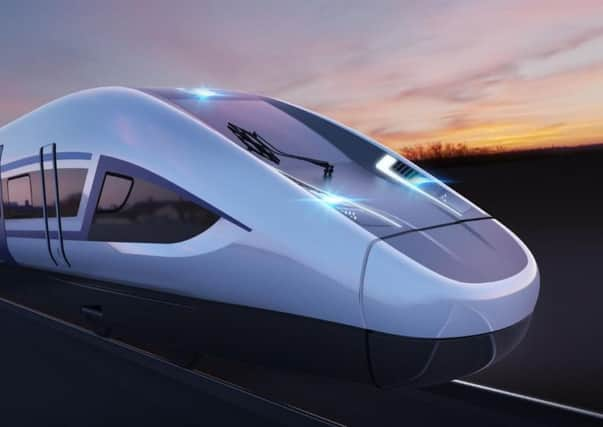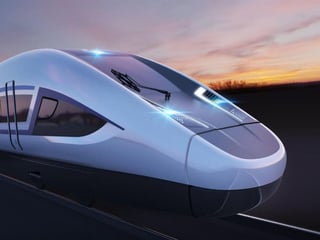Is HS2 rail link being built in wrong direction? – Bill Jamieson


There is nothing wrong with great infrastructure projects. Without them, we would never have had the military roads, the iconic Forth railway bridge, the 1,758 miles of railway track, the Glasgow subway or the graceful Queensferry Crossing – finished on time and within budget.
It’s easy in Scotland to recoil in scepticism at grand new projects such as HS2. Memories of the Edinburgh trams debacle and the cost overruns of the Scottish Parliament spring to mind when we cast an eye over those artist projections of gleaming, ultra-modern high-speed trains whooshing through verdant countryside.
Advertisement
Hide AdAdvertisement
Hide Ad“Aye, right”, is the widespread reaction. Why are we so bad at infrastructure projects that can now take so long in scoping and planning? Even limited targeted flood defence projects are still incomplete after five years and failed to prevent householders in Hebden Bridge from another water onslaught in the main street.
We have good reason to be sceptical at Prime Minister Boris Johnson’s gushing announcement of the ‘transformative’ HS2 go-ahead this week – a project whose cost has already spiralled from an initial £32.7 billion, through £55 billion, now £106 billion – and with trackwork, tunnels and viaducts barely started.
Yet how easily do we forget how much we owe to the mega-projects of yesteryear, that the 19th century was the age of transformative infrastructure across the country, powering the growth of cities and a national railway network that shot up in barely 30 years. No ambition seemed too large for Isambard Kingdom Brunel – no bridge, viaduct or coastal track, which were hailed then, and since, as great, inspiring achievements.
Drooling over high-speed trains elsewhere
Nor did Scotland lose out: between 1826, with the first passenger railway between Kilmarnock and Troon, and 1900 virtually every mainland town with a population of more than 2,000 was linked with a rail line and station. Roads linked every town and village in a nationwide web of connectivity. We took pride in dozens of infrastructure projects and impressive public buildings from libraries to museums.
Yet today we lag the world’s most advanced economies in rail investment. We drool at high-speed networks in France, Germany and Japan. Yet even after ten years of reports, analysis and argument, with some £10 billion already spent, HS2 has barely begun – and there is still intense opposition.
And for good reason. On latest government timetables, Phase 1 (London to Birmingham) will not now be fully operational until 2031, with the final stage extension to Leeds and Manchester stretching out to 2040.
Almost every project of more than five years duration is vulnerable to changes in economic and political cycles. We assume there will be no major economic shocks, or upsets to government budgets, that there will be no deterioration in debt projections, that there will be few other major calls on government funding and that political enthusiasm will hold fast.
A look back over the past 20 years suggests few of these can be counted on.
Advertisement
Hide AdAdvertisement
Hide AdIf the principal purpose of HS2 is to enhance rail connectivity in the north of England and improve east-west rail routes and services, it would surely have been better, as Transport Secretary Grant Shapps suggested earlier this week, to start construction in the north rather than London. The patience of northern MPs is likely to be sorely tested even before 2031, never mind 2040. How much better if the project had been embarked upon upside down?
What about Edinburgh-London?
Even as plans now stand, it is hard to see how HS2 will usher in a UK-wide transformation. There is little here to lift economic prospects in Wales and the south-west of England, while Scotland has few reasons to cheer, even allowing for ‘Barnett consequentials’ governing Whitehall spending north of the border.
Better still from a UK-wide, as much as a Scottish, perspective would have been to announce a fast Edinburgh-London rail link as the cardinal objective, linking our two great capital cities and setting out – in literally concrete terms – the Westminster Government’s commitment to a joined-up United Kingdom. Whether our constitutional future lies broadly as now or mutates into a federal system with a newly constituted second chamber, such connectivity would be ideally suited, politically as well as economically, and beneficial to both countries.
This would also prove more compelling than Boris Johnson’s musings on a bridge link between Northern Ireland and southern Scotland. We have not even got to first base on an evidence-based study of economic costs and benefits, let alone a structural appraisal of the durability of such a bridge. As for the political optics of it, such a link between Scotland and Northern Ireland funded in the main by English taxpayers is hardly likely to gain widespread voter endorsement.
So, even overcoming a deep-rooted doubt and scepticism over hugely expensive public projects, the Government has enough on its plate to maintain public support over 20 years for the biggest infrastructure project ever proposed.
